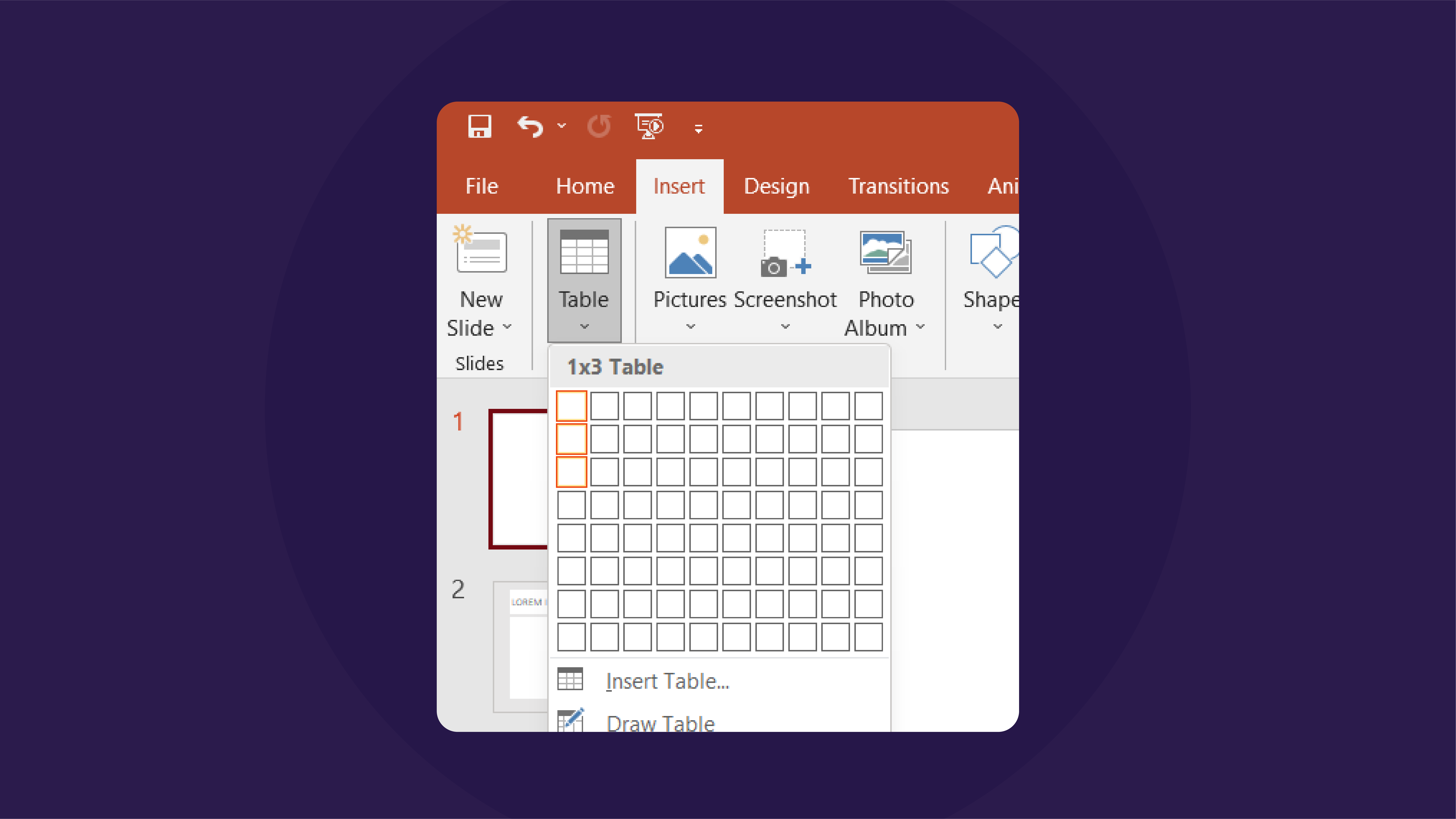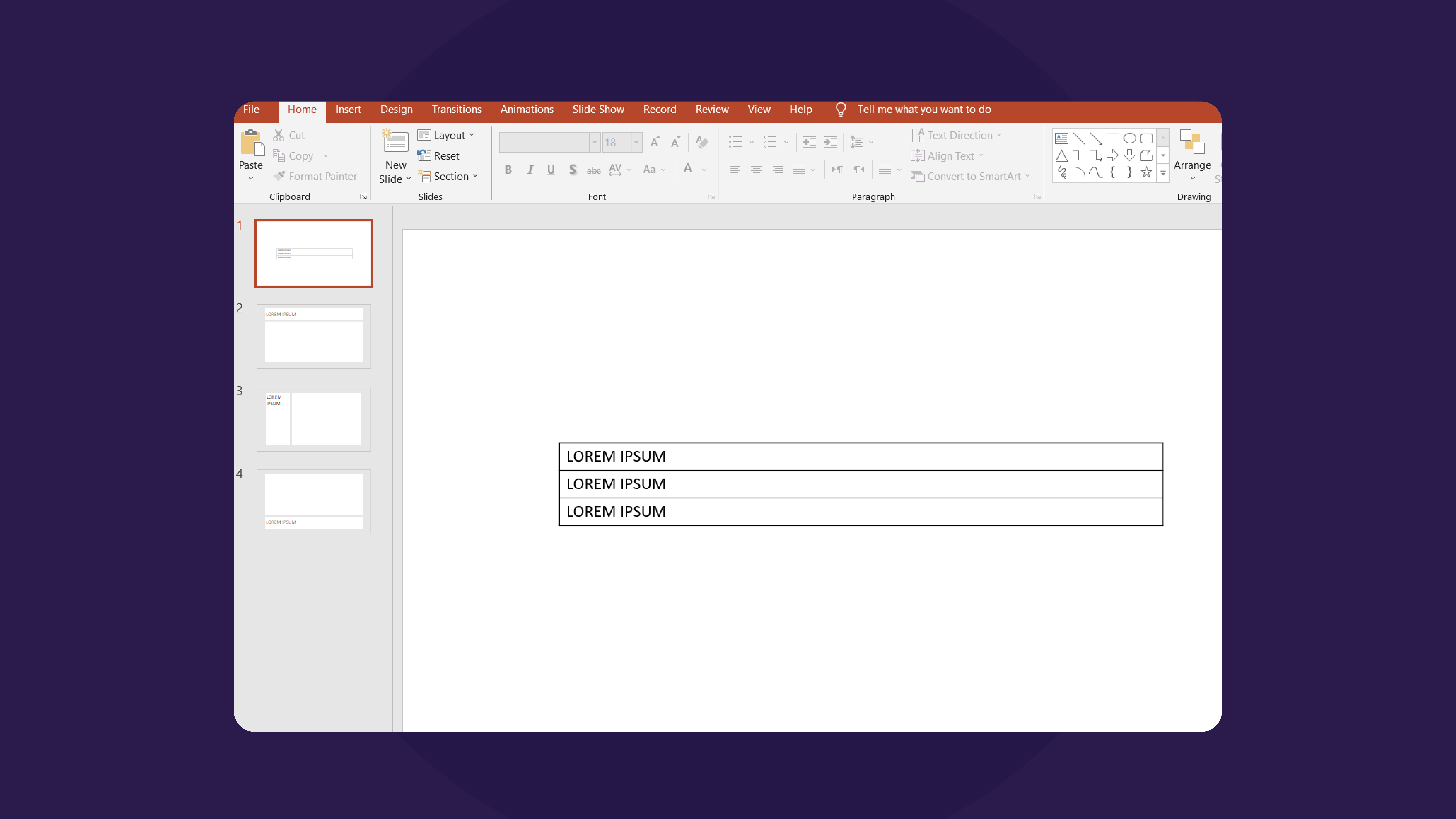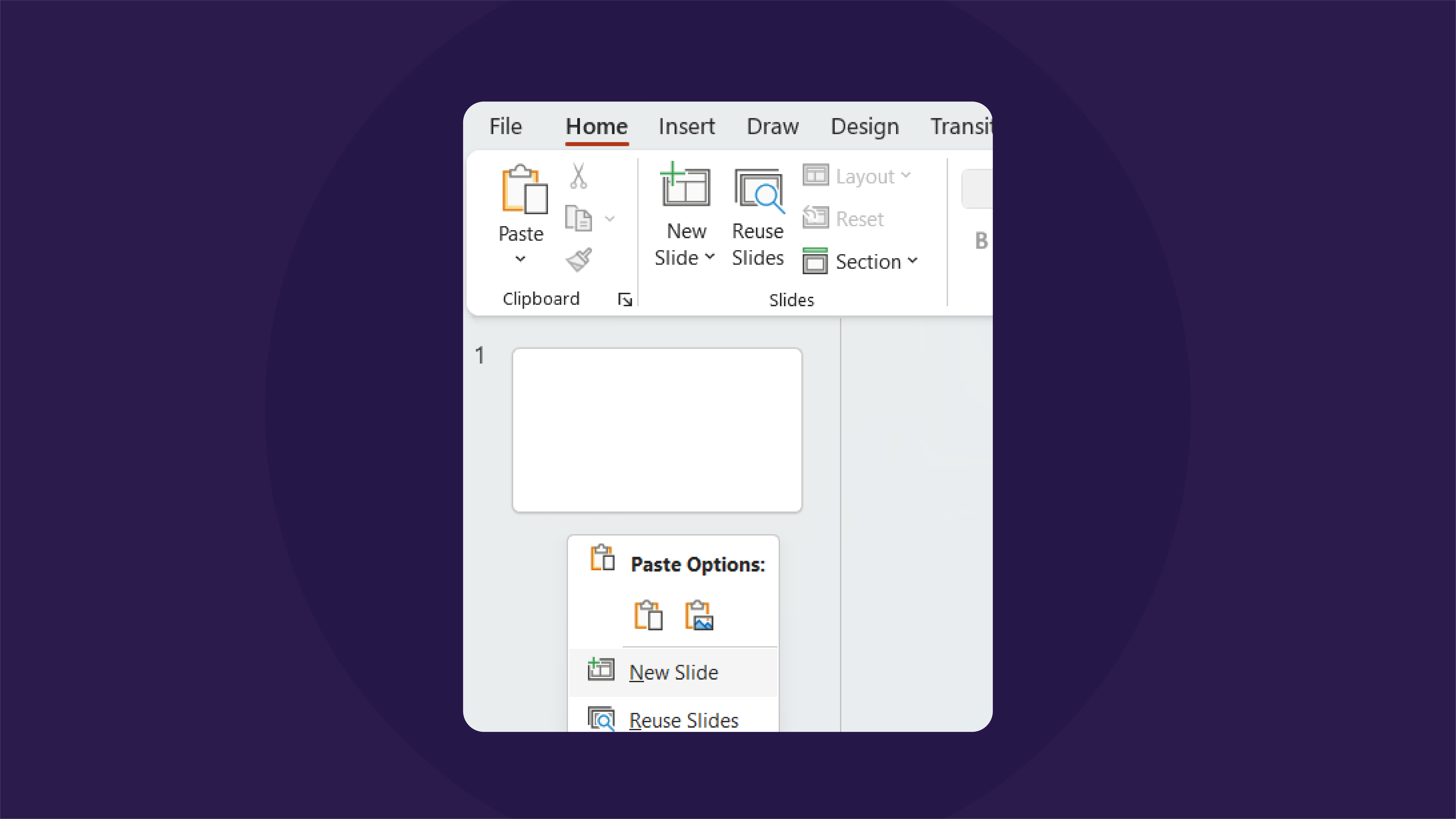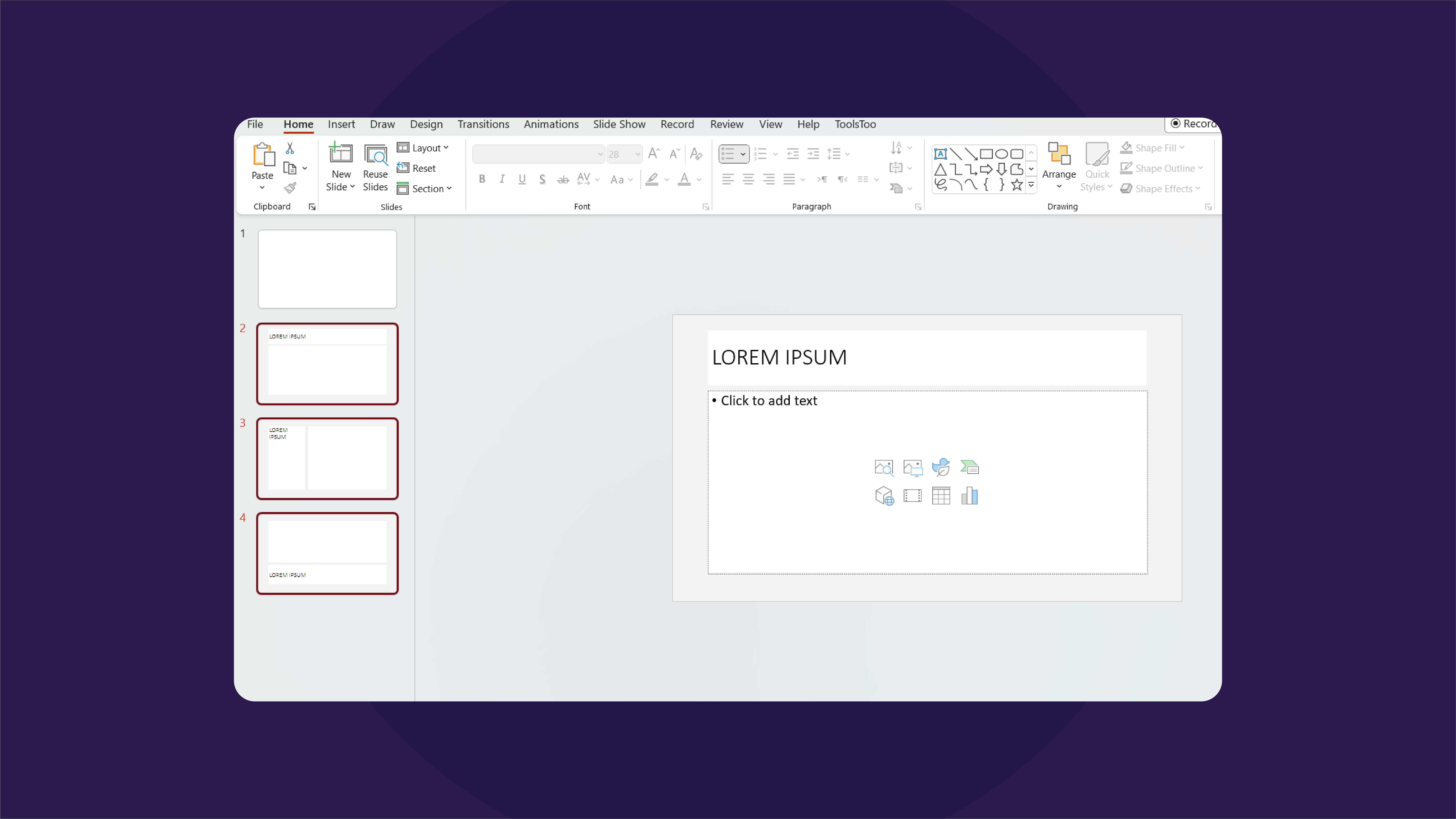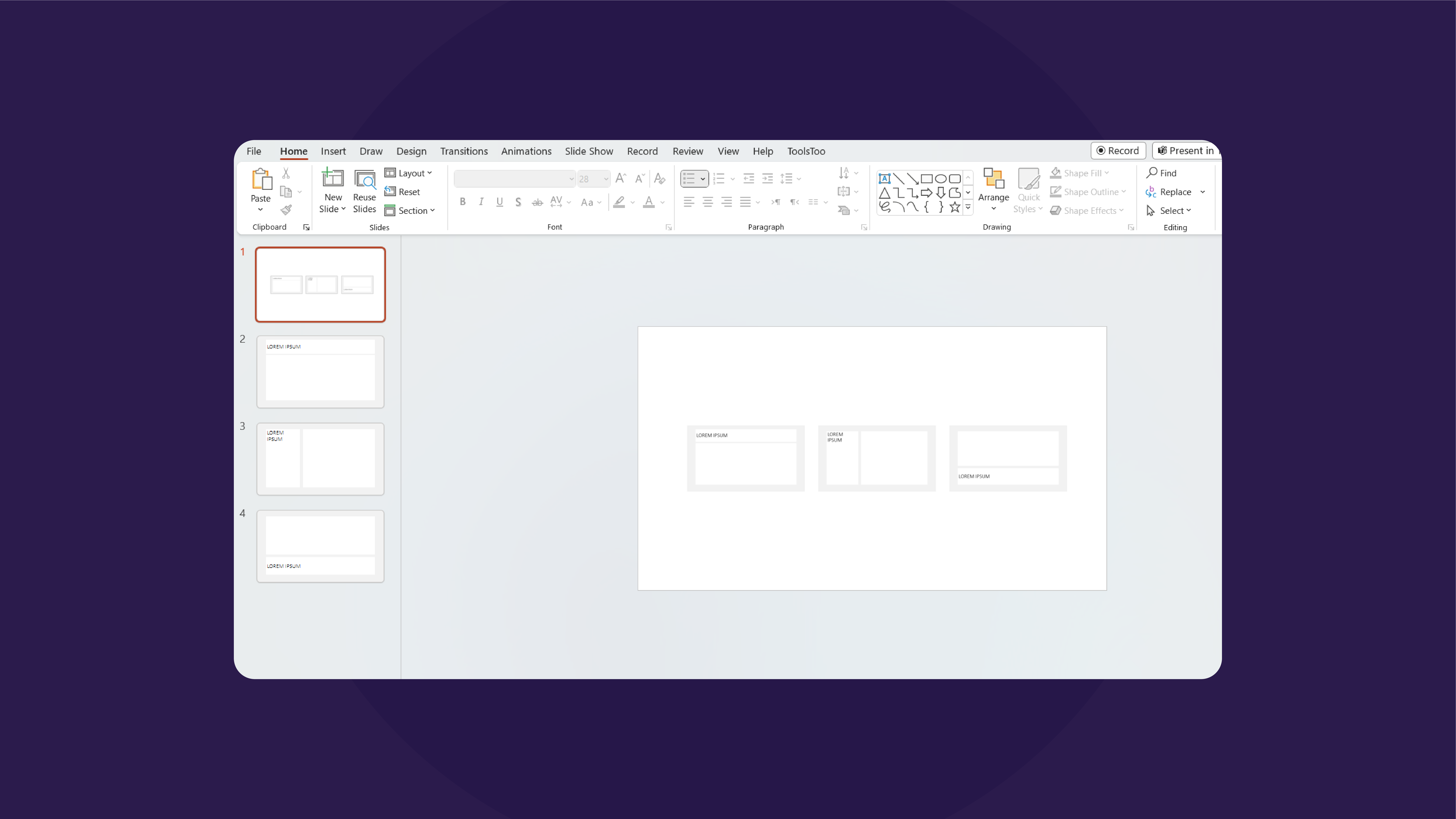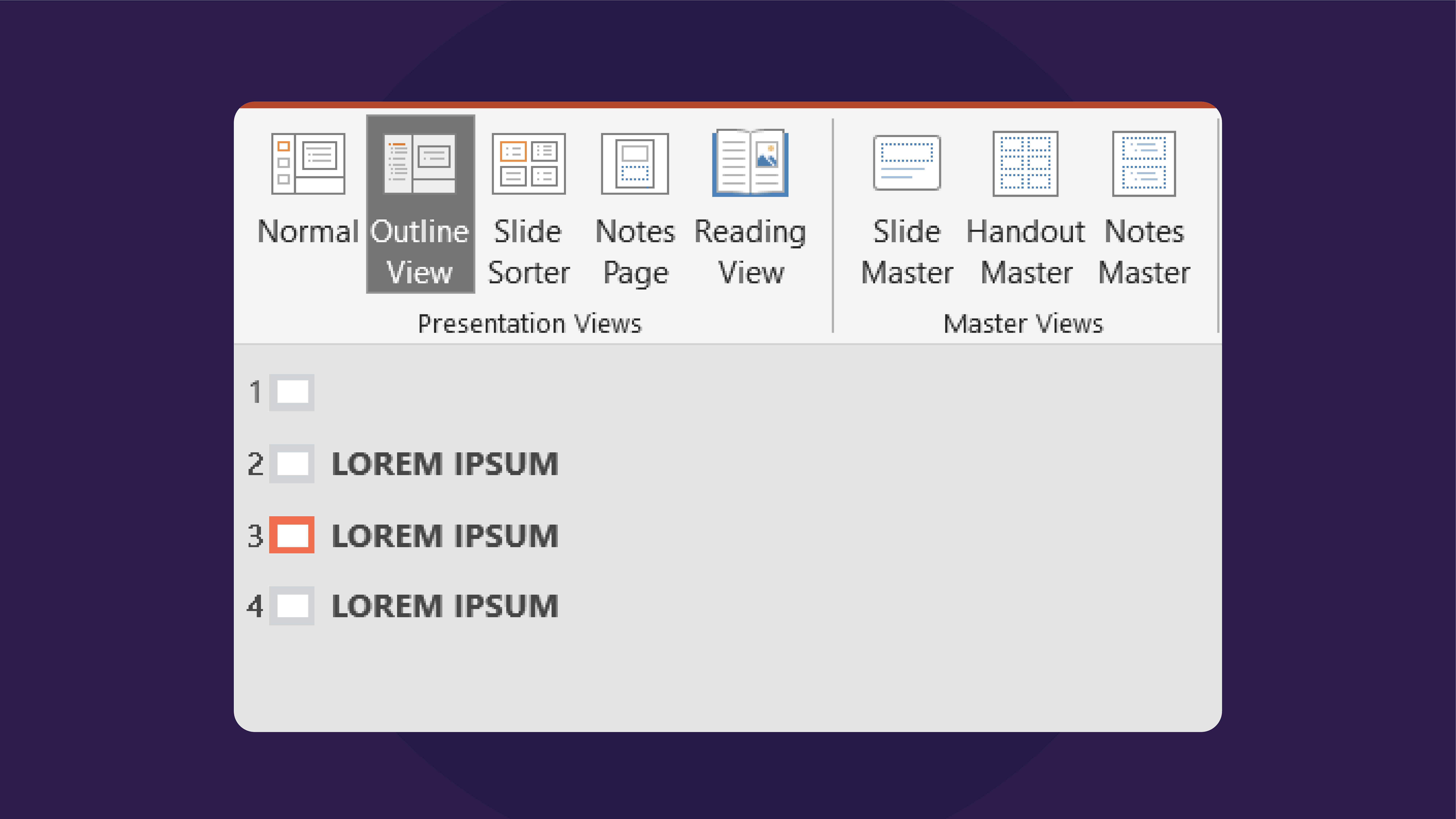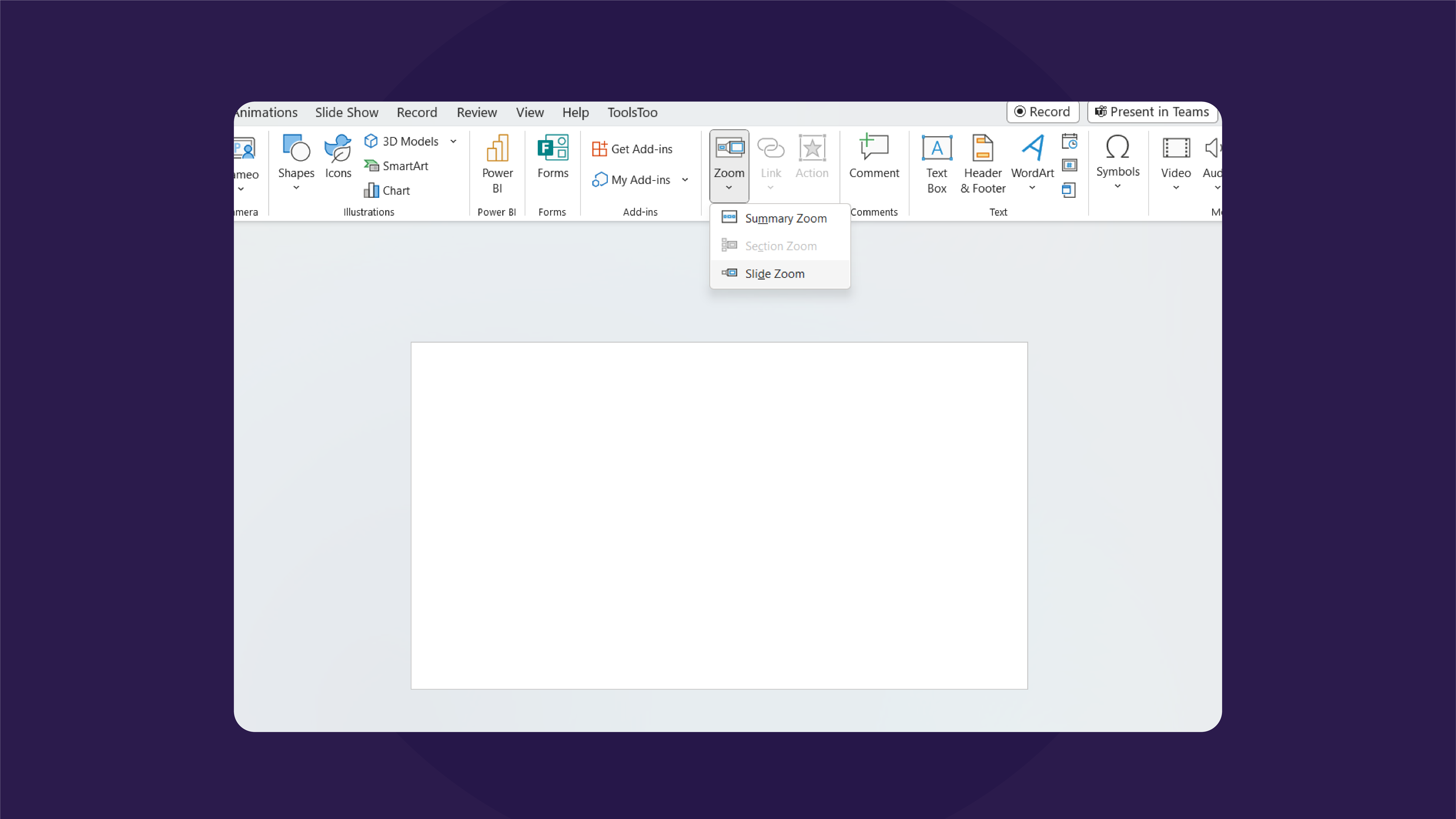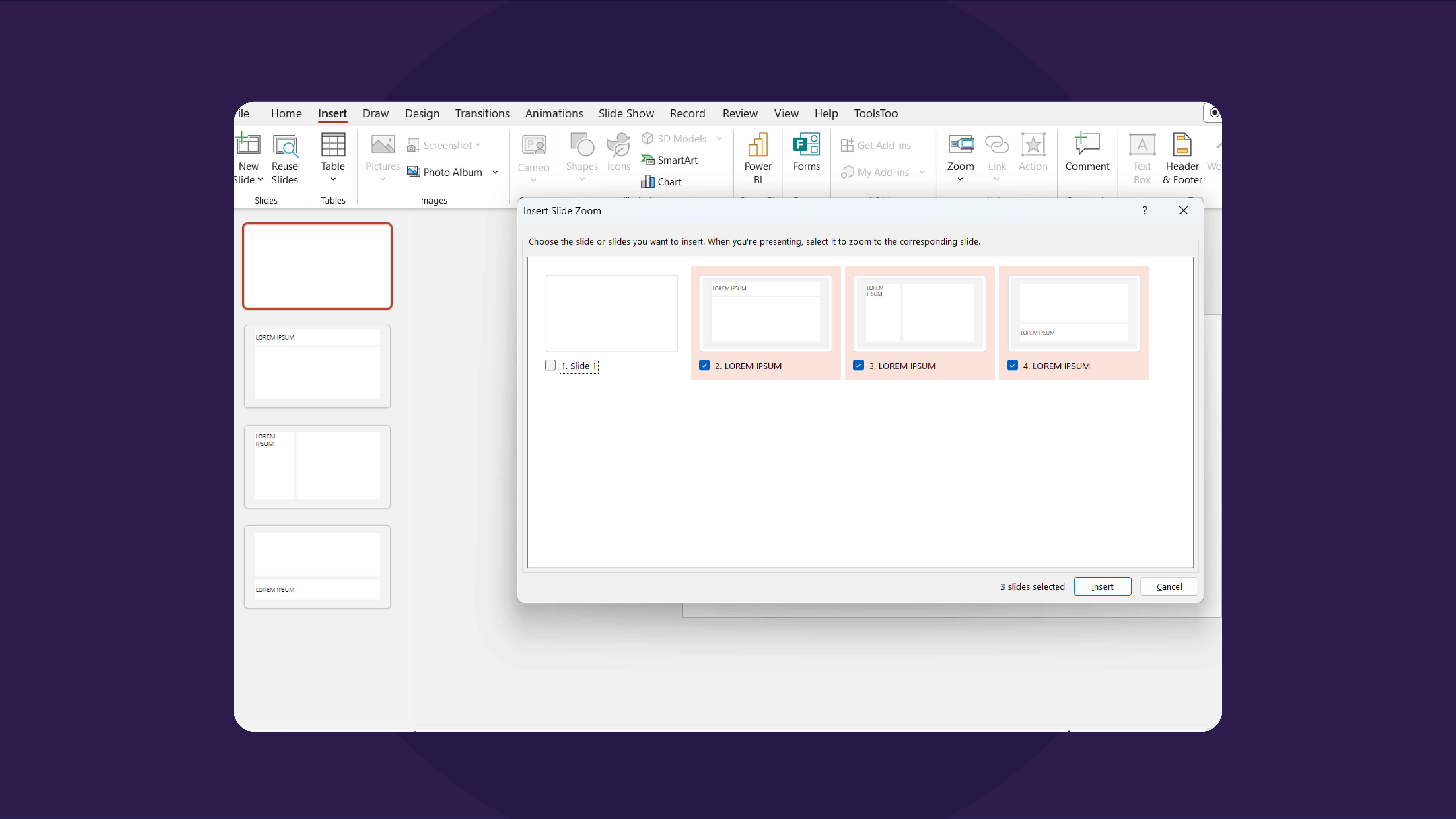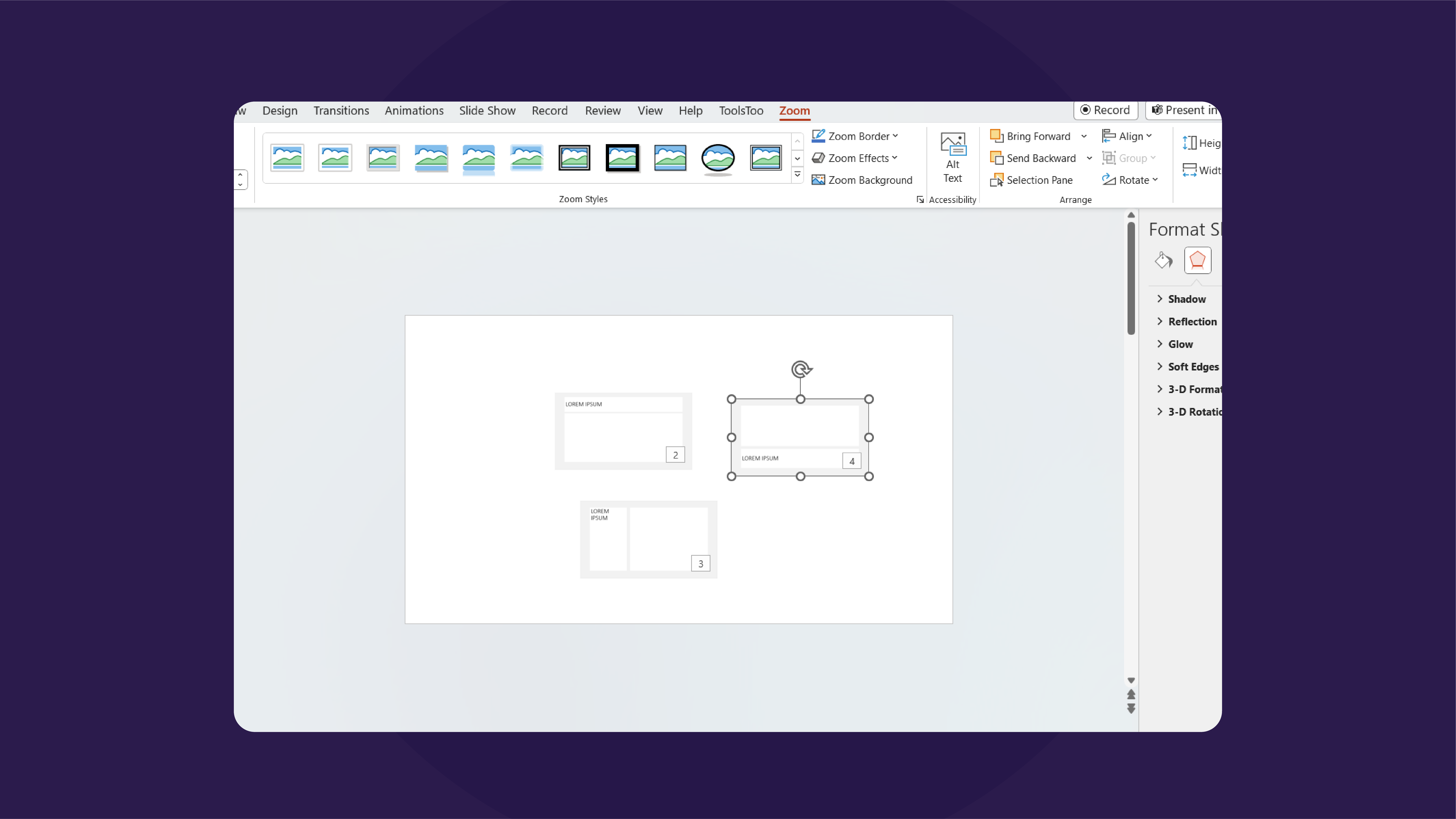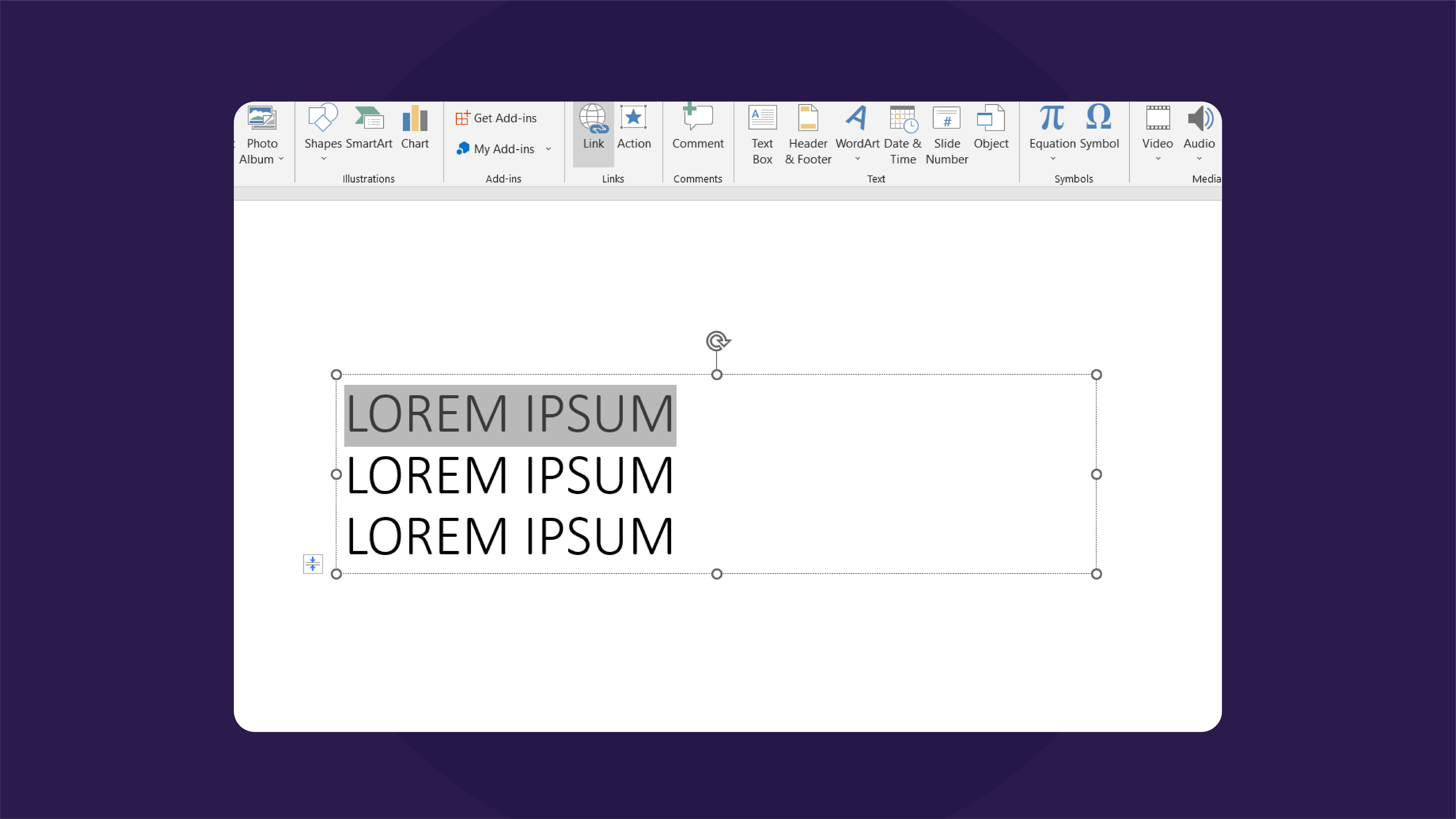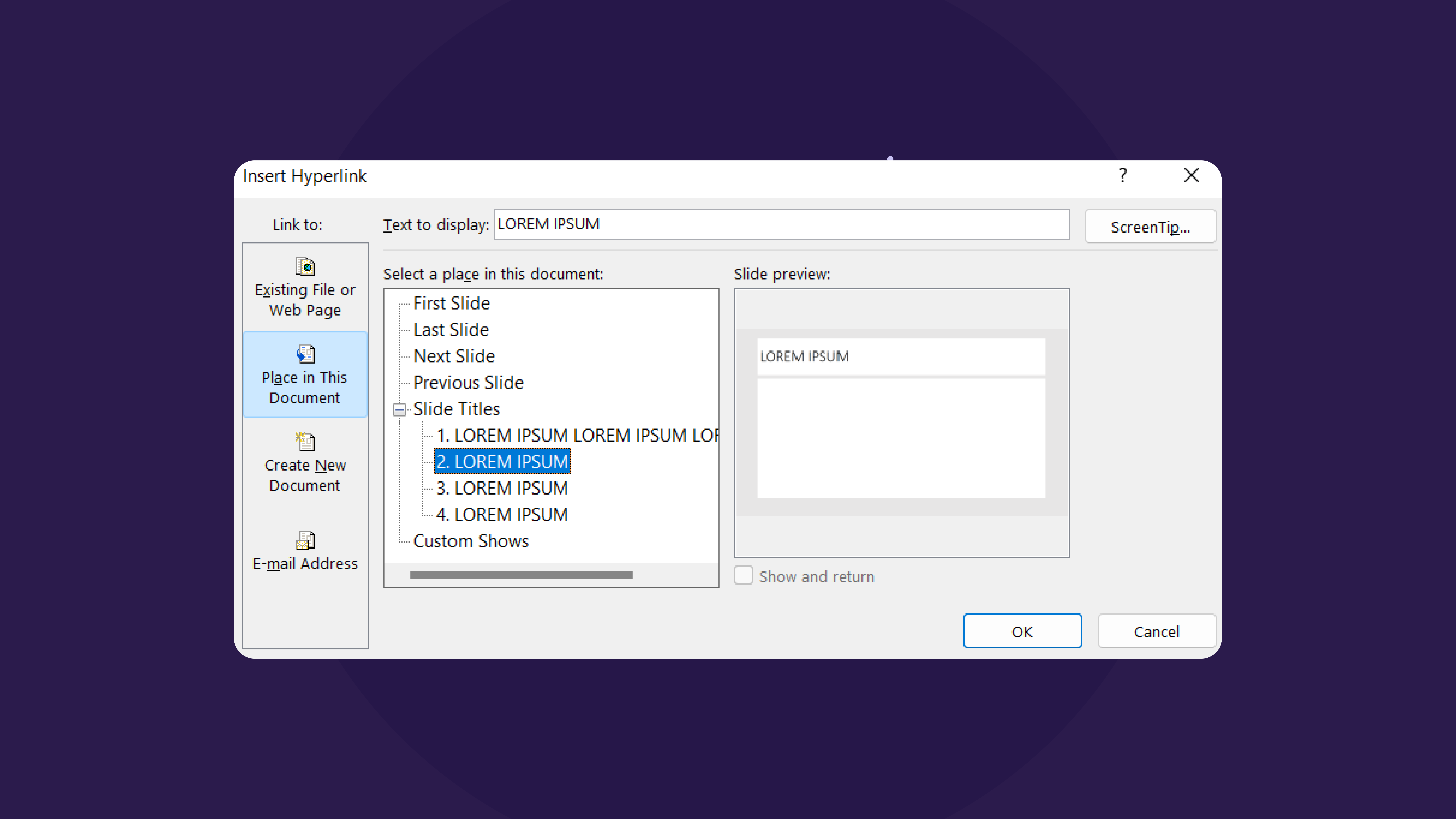29 September 2024
Any strong PowerPoint presentation requires clarity, structure, and the ability for the user to smoothly navigate through the slides. A table of contents offers a roadmap that provides an outline for a presentation’s content that both the presenter and audience can follow.
It is a wonderful and underrated tool that serves as both a preview and an outline, with the added bonus of solidifying the presenter’s professionalism and preparation. This guide looks at the various ways to create and customize a table of contents in PowerPoint.
What is a table of contents in PowerPoint?
A table of contents is a guide that shows the different sections of a document and their page numbers. This page, often referred to as the Agenda Slide in presentations, offers a necessary overview of the content and structure. Another notable benefit of a table of contents is that it ensures clarity and provides easy navigation between different sections and slides. Typically, the table of contents only takes up a single slide or page and is utilized to add an interactive element with its clickable pages.
Why use a table of contents in PowerPoint?
Including a table of contents benefits both the presenters and audience members by providing them with an overview of the content to come. It establishes a clear structure for the presentation to follow and simplifies the navigation across different slides for users to jump between their desired sections. Also, it is a helpful reference for those absentees who can easily catch up and identify which sections they missed or want to follow up on. Plus, it gives a presentation a professional touch that demonstrates the presenter’s organization and command of the material.
5 Ways to create a table of contents in PowerPoint
There is no one fixed way to add a table of contents to a PowerPoint presentation; it is a flexible process that allows you to customize it as you please.
Method 1 – Manually creating a table of contents
An obvious and easy way to create the table of contents is to manually generate the table by typing out all the content and titles you want to use.
Step 1:
Add a slide to be your table of contents or agenda slide, you can insert a table or format it however you like.
Step 2:
Type out or copy and paste each of the slide titles in the presentation that you want covered in the table of contents.
Method 2 – Dragging the slides to the presentation
The first method doesn’t include any complex formatting or manual linking to add a table of contents; it is as simple as dragging and dropping slides. Although note that this method only works with Windows users.
Step 1:
As you add your fresh slides for your presentation content, add a slide to be designated as your table of contents by clicking on the “New Slides” button in the Home tab.
Step 2:
On the left-hand “Thumbnails Pane,” select the slides you wish to include, click and hold the slide, and drag it to the table of contents slides.
Step 3:
Once you’ve dropped the slides in the table of contents, PowerPoint will automatically link them and showcase the slide’s thumbnail.
Method 3 – Using the Outline View
In the second method, you can easily use the presentation outline and slide titles to generate the table of contents using the Outline View.
Step 1:
Find the “View” tab and click on “Outline View.”
Step 2:
Then you should find all the slide titles listed in the thumbnail pane on the left, so simply copy and paste the titles to the table of contents slide and format them as you prefer.
Method 4 – Using the Slide Zoom Feature in PowerPoint
In the latest PowerPoint versions since 2019, there have been new features that facilitate making a table of contents easier, such as the Slide Zoom Feature.
Step 1:
In the Insert tab, find the “Zoom” button and click on the “Slide Zoom” option.
Step 2:
A Slide Zoom dialog box should appear with all the presentation’s slides; tick the slides you want to be featured in the table of contents and click “Insert.”
Step 3:
PowerPoint will represent the slides with their thumbnail images, you can change them by selecting “Zoom” and playing around with the features in the “Zoom Tools Format” tab. Finally, arrange the thumbnails based on the presentation’s layout, so that when you play the presentation, you can use the Zoom feature to navigate across the slides.
Method 5 – Using SmartArt in PowerPoint
For this approach, you would have already created a table of contents using any of the above methods. But once you have your table of contents ready, select all the text and click on the “Convert to SmartArt” button in the Home tab. From there, you can choose a template to elevate your table of contents to be more visually appealing and organized.
Linking the table of contents to slides
To make the table of contents effective as a map for your PowerPoint, adding links allows the user and/or presenter to jump from slide to slide without excessively searching. Before being able to add any links, there should already be a table of contents ready to use. In the current PowerPoint versions, you will need to manually link each slide.
Step 1: Selecting the content
Highlight the header in the table of contents and click on the “Link” button in the Insert tab.
Step 2: Linking the content to the slides
In the “Insert Hyperlink” dialog box, find the “Place in This Document” section on the left side and choose the slide that corresponds with the header. Select “OK” to confirm your selection.
Step 3: Modifying the text color
You will recognize the linked text by its blue color; you can customize the color to align with your presentation’s color scheme. Finally, test the link by clicking on it to confirm its effectiveness.
How do I add page numbers to the table of contents in PowerPoint?
Currently, there is no way to add page numbers to a PowerPoint presentation. If you want to add page numbers to a presentation, you will need to do so manually and include a separate column in the table of contents to add the page numbers.
Customize a table of contents PowerPoint Slide
Having meticulously crafted and interwoven a table of contents into your PowerPoint, it’s now time to transform it into a visually stunning and harmonious component that blends in with your presentation’s branding. Explore the design elements within the ribbon menu that give you the power to experiment with text fonts, color palettes, and shapes that will not only elevate the aesthetics of your table of contents but also emphasize its headers.
Examples of a table of content
There are different ways to present a table of contents through PowerPoint design. These examples showcase diverse ways of designing engaging agendas to suit your presentation, as well as your audience.
Example 1: Table of Contents APA Style
A common PowerPoint format uses the APA style for formatting and citation, so naturally, when it is used, it will extend to the table of contents. Here, each of the headings is highlighted based on whether it’s a 1st heading, 2nd heading, etc., all left-aligned, formatted, and with an additional indent based on its level. For more details about APA formatting, find and follow an APA 7 citation guide.
Example 2: Colorful table of contents
For a more creative and distinct table of contents, you could use a more infographic-inspired style. This might not always be suitable for larger presentations since it will occupy several slides, but it is a unique approach for a visually appealing table of contents slide. A colorful approach also helps the viewer identify different headings and topics more easily with the presentation’s structure.
Example 3: Table of Contents with a Picture
Another creative approach for a table of contents is to incorporate a relevant image into the slide to make it blend in with the rest of the presentation. Depending on the image, it can be a nice, subtle touch to offer variation from a traditional outline while still maintaining an interesting slide.
Example 4: Table of Contents with Text
Kill two birds with one stone by sharing the presentation topic and outline on one slide. Add a brief text that introduces the subject matter and positions it across from the presentation headings to give the audience a clearer idea of what is to be discussed.
Incorporating a table of contents into your PowerPoint significantly enhances the presentation’s organization and efficiency. Providing the audience with a content overview keeps them involved and allows them to follow along more effortlessly. Creating a table of contents allows you to design a flexible and effective framework in which to present your material, and is an easy way to ensure a proper and coordinated presentation.




